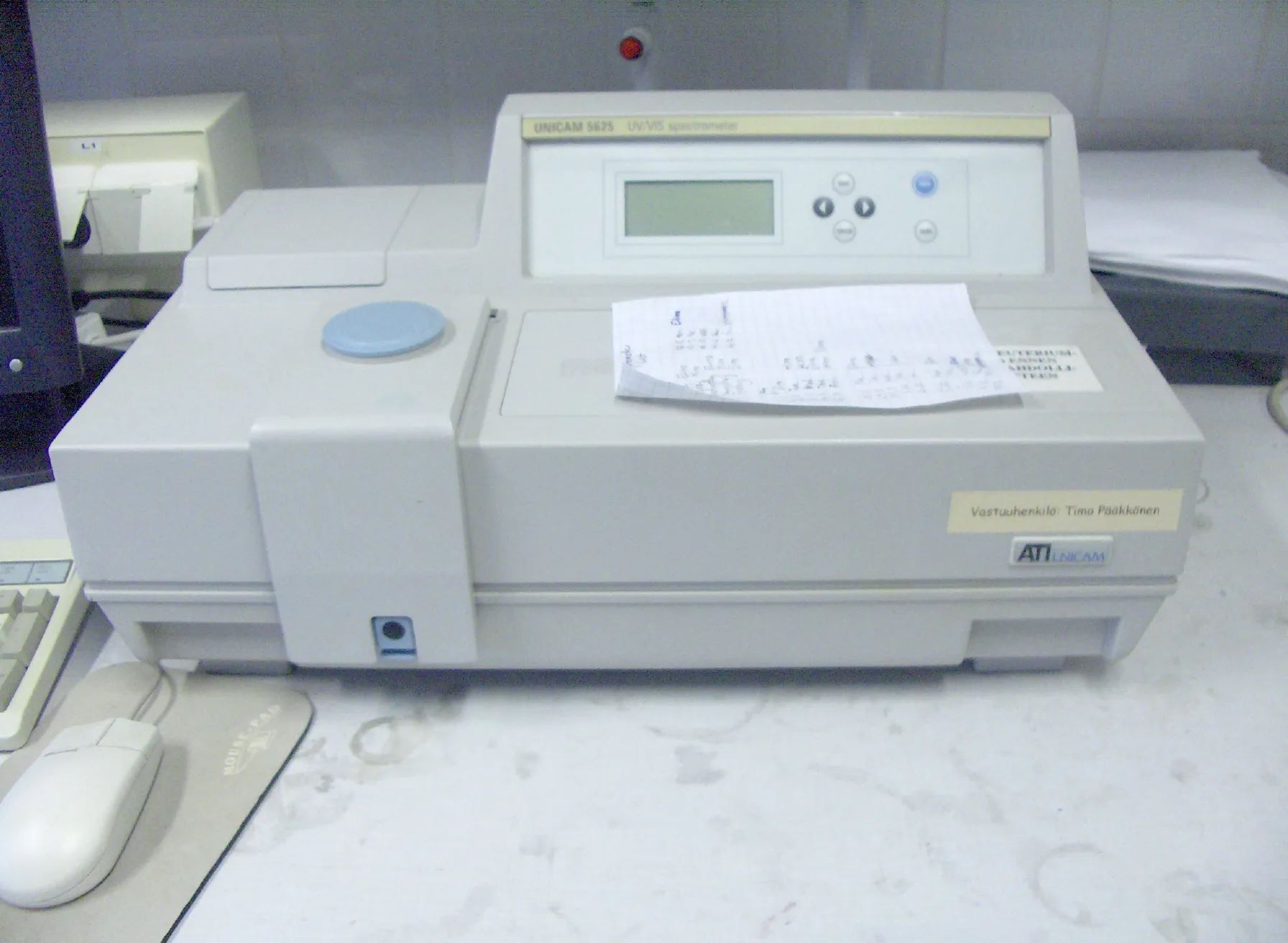Home>Science>The Ultimate Showdown: Transmittance Vs. Absorbance – What’s The Real Difference?


Science
The Ultimate Showdown: Transmittance Vs. Absorbance – What’s The Real Difference?
Published: January 17, 2024
Discover the key disparities between transmittance and absorbance in the realm of science. Unravel the real differences and their impact.
(Many of the links in this article redirect to a specific reviewed product. Your purchase of these products through affiliate links helps to generate commission for Regretless.com, at no extra cost. Learn more)
Table of Contents
Introduction
In the realm of science, the interplay between light and matter has long been a captivating subject. At the heart of this interaction lie two fundamental concepts: transmittance and absorbance. These concepts are pivotal in various scientific disciplines, including chemistry, physics, and material science. Understanding the key differences between transmittance and absorbance is crucial for unraveling the mysteries of light-matter interactions and their practical applications.
Transmittance and absorbance are intricately linked to the behavior of light as it encounters different materials. These phenomena play a pivotal role in determining how light is either transmitted through a substance or absorbed by it. By delving into the underlying principles of transmittance and absorbance, we can gain profound insights into the behavior of light and the properties of the materials it encounters.
As we embark on this exploration, we will unravel the intricate mechanisms that govern transmittance and absorbance. By dissecting these concepts, we will uncover their significance in diverse fields, ranging from spectroscopy and optics to environmental science and beyond. This journey will shed light on the distinctive characteristics of transmittance and absorbance, illuminating their roles in scientific research, technological innovations, and everyday applications.
Join me as we delve into the fascinating world of light-matter interactions, where transmittance and absorbance take center stage. Through this journey, we will unravel the real difference between these two phenomena and gain a deeper appreciation for their profound impact on the scientific landscape.
Understanding Transmittance
Transmittance is a fundamental concept that elucidates how light traverses through a material without being absorbed or scattered. It serves as a crucial parameter for quantifying the extent to which light can pass through a substance. This phenomenon is particularly pertinent in the fields of optics, spectroscopy, and material science, where the behavior of light is a focal point of study.
When light encounters a material, a fraction of it is transmitted through the substance, while the rest may be absorbed or scattered. Transmittance is a measure of the proportion of light that successfully passes through the material. This is quantified as a percentage, representing the ratio of transmitted light to the incident light. It provides valuable insights into the optical properties of the material, shedding light on its transparency and the degree to which it allows light to propagate through it.
The quantification of transmittance is integral to understanding the behavior of materials in various applications. For instance, in the realm of optics, transmittance plays a pivotal role in determining the clarity and quality of lenses, windows, and other transparent components. In spectroscopy, transmittance measurements are indispensable for analyzing the composition and properties of substances based on the wavelengths of light that are transmitted through them.
Transmittance is often expressed in terms of the transmittance spectrum, which provides a comprehensive profile of how a material interacts with light across different wavelengths. This spectral analysis yields valuable information about the material's optical characteristics, such as its absorption bands and transmission windows. By examining the transmittance spectrum, researchers and engineers can gain profound insights into the material's behavior, paving the way for innovations in optics, photonics, and beyond.
In essence, transmittance serves as a window into the interaction between light and matter, offering a nuanced understanding of how materials influence the propagation of light. By unraveling the intricacies of transmittance, scientists and engineers can harness this knowledge to develop advanced materials, optical devices, and analytical techniques that drive progress across a myriad of scientific and technological domains.
Understanding Absorbance
Absorbance, a pivotal concept in the realm of light-matter interactions, elucidates the extent to which a material absorbs light across a range of wavelengths. Unlike transmittance, which quantifies the proportion of light that passes through a substance, absorbance measures the degree to which a material captures and attenuates incident light. This phenomenon is deeply intertwined with the intrinsic properties of materials and plays a crucial role in diverse scientific disciplines, including chemistry, environmental science, and spectroscopy.
At the core of absorbance lies the absorption of light by the material's constituent molecules or atoms. When light interacts with a material, certain wavelengths are selectively absorbed due to the energy transitions within the material's molecular or atomic structure. This selective absorption gives rise to the material's unique absorbance spectrum, which provides a detailed profile of its interaction with light across different wavelengths. By analyzing the absorbance spectrum, researchers can glean valuable insights into the material's chemical composition, electronic structure, and optical properties.
The quantification of absorbance is typically expressed in terms of the Beer-Lambert law, which establishes a logarithmic relationship between the intensity of incident light, the absorbance of the material, and its concentration. This foundational principle underpins absorbance measurements in various analytical techniques, such as UV-visible spectroscopy and colorimetry. By leveraging the Beer-Lambert law, scientists and analysts can accurately determine the concentration of substances in solution, assess the purity of compounds, and unravel the intricate details of chemical reactions.
Absorbance also serves as a crucial parameter for characterizing the optical properties of materials, including pigments, dyes, and biological molecules. In the field of environmental science, absorbance measurements are instrumental in assessing water quality, as they can reveal the presence of contaminants, organic matter, and pollutants based on their distinctive absorbance signatures. Moreover, absorbance spectroscopy plays a pivotal role in elucidating the behavior of light-absorbing compounds in biological systems, offering valuable insights into biochemical processes and the structure-function relationships of biomolecules.
In essence, absorbance offers a profound glimpse into the intricate interplay between light and matter, unveiling the unique fingerprint of materials across the electromagnetic spectrum. By unraveling the nuances of absorbance, scientists and researchers can harness this knowledge to advance fields such as analytical chemistry, environmental monitoring, and materials science, paving the way for transformative discoveries and technological innovations.
Key Differences
Transmittance and absorbance represent two distinct yet interconnected facets of light-matter interactions, each offering unique insights into the behavior of materials when exposed to light. Understanding the key differences between transmittance and absorbance is essential for discerning their respective roles in scientific research, analytical techniques, and practical applications.
Transmittance primarily quantifies the proportion of incident light that successfully passes through a material without being absorbed or scattered. It serves as a measure of the material's transparency and its ability to transmit light across a range of wavelengths. In contrast, absorbance delineates the degree to which a material absorbs light at specific wavelengths, reflecting the energy transitions and molecular interactions within the material.
One of the fundamental distinctions between transmittance and absorbance lies in their measurement scales. Transmittance is typically expressed as a percentage, representing the ratio of transmitted light to incident light. This straightforward metric provides a clear indication of the material's ability to transmit light, offering valuable insights into its optical properties. On the other hand, absorbance is quantified on a logarithmic scale, often in terms of the Beer-Lambert law. This logarithmic relationship between the intensity of incident light, the absorbance of the material, and its concentration enables precise measurements of light absorption across a wide dynamic range.
Furthermore, transmittance and absorbance manifest distinct spectral profiles that unveil crucial information about the material's interaction with light. Transmittance spectra elucidate the material's transparency and the wavelengths at which it allows light to pass through, providing valuable data for optical design and spectroscopic analysis. In contrast, absorbance spectra offer detailed insights into the material's selective absorption of light, unveiling its unique fingerprint across the electromagnetic spectrum. These spectral differences underscore the complementary nature of transmittance and absorbance, as they collectively unravel the optical characteristics and molecular properties of materials.
Moreover, the practical applications of transmittance and absorbance diverge across various scientific domains. Transmittance measurements are integral in optics, photonics, and spectroscopy, where they inform the design of optical components, the analysis of materials' optical properties, and the characterization of transparent substances. Conversely, absorbance finds widespread utility in analytical chemistry, environmental monitoring, and biochemical research, where it serves as a cornerstone for quantifying the concentration of substances, assessing the purity of compounds, and unraveling the intricate details of light-absorbing compounds in diverse matrices.
In essence, the key differences between transmittance and absorbance encompass their measurement scales, spectral manifestations, and practical applications. By discerning these distinctions, scientists and researchers can leverage the complementary nature of transmittance and absorbance to unravel the intricate properties of materials, driving advancements across a spectrum of scientific disciplines and technological frontiers.
Applications and Uses
Transmittance and absorbance play pivotal roles across a diverse array of scientific disciplines, offering profound implications for numerous applications and practical uses. Their unique characteristics and quantitative insights into light-matter interactions render them indispensable in various fields, ranging from materials science and environmental monitoring to analytical chemistry and optical design.
Transmittance Applications
Transmittance finds widespread utility in optics and photonics, where it underpins the design and optimization of optical components such as lenses, windows, and filters. By quantifying the transparency of materials across different wavelengths, transmittance measurements enable engineers and researchers to develop high-performance optical systems with enhanced clarity and minimal light loss. This is particularly crucial in applications such as camera lenses, microscopes, and laser systems, where the efficient transmission of light is paramount for achieving superior imaging and precision.
In the realm of spectroscopy, transmittance serves as a cornerstone for analyzing the composition and properties of substances based on their transmission characteristics. Spectrophotometers leverage transmittance measurements to elucidate the absorption and emission spectra of materials, enabling researchers to unravel the intricate details of chemical compounds, biomolecules, and nanomaterials. Moreover, transmittance measurements are instrumental in characterizing the optical properties of thin films and coatings, facilitating advancements in display technologies, solar cells, and optical coatings for diverse applications.
Absorbance Applications
Absorbance plays a pivotal role in analytical chemistry, where it serves as a foundational principle for quantifying the concentration of substances in solution. Techniques such as UV-visible spectroscopy rely on absorbance measurements to determine the concentration of analytes, assess the purity of compounds, and monitor chemical reactions in real time. This analytical prowess extends to diverse fields, including pharmaceutical analysis, environmental monitoring, and biochemical research, where absorbance measurements enable precise quantification of substances and elucidation of complex molecular interactions.
In environmental science, absorbance spectroscopy finds applications in assessing water quality and monitoring pollutants. By analyzing the absorbance spectra of water samples, researchers can detect the presence of contaminants, organic matter, and pollutants, providing crucial insights for environmental remediation and resource management. Additionally, absorbance measurements are instrumental in studying the optical properties of natural organic matter in aquatic systems, shedding light on the dynamics of carbon cycling and ecosystem health.
Synergistic Applications
The synergy between transmittance and absorbance extends to diverse interdisciplinary domains, where their combined insights drive innovative solutions and technological advancements. In material science, the complementary nature of transmittance and absorbance facilitates the characterization of optical materials, photovoltaic devices, and light-emitting diodes, paving the way for sustainable energy technologies and advanced optical materials. Moreover, the interplay between transmittance and absorbance is integral in biomedical research, where it underpins the analysis of biomolecular interactions, drug formulations, and diagnostic assays, fostering breakthroughs in healthcare and pharmaceutical development.
In summary, the applications and uses of transmittance and absorbance span a wide spectrum of scientific and technological domains, from optics and spectroscopy to environmental science and beyond. By harnessing the quantitative insights provided by transmittance and absorbance, researchers and engineers continue to innovate and push the boundaries of knowledge, driving transformative developments that shape our understanding of the natural world and propel technological progress.
Conclusion
In conclusion, the exploration of transmittance and absorbance unveils the intricate interplay between light and matter, offering profound insights into the optical properties and molecular characteristics of materials. The distinct yet complementary nature of transmittance and absorbance underscores their pivotal roles in diverse scientific disciplines and practical applications. By discerning the key differences between these phenomena, scientists and researchers can leverage their quantitative insights to drive innovations across a myriad of domains, from materials science and environmental monitoring to analytical chemistry and optical design.
Transmittance, as a measure of a material's transparency and light transmission capabilities, finds widespread utility in optics, photonics, and spectroscopy. Its applications extend to the design of optical components, the characterization of thin films, and the analysis of transmission spectra, driving advancements in optical technologies and materials research. On the other hand, absorbance, which delineates a material's selective absorption of light and its concentration-dependent behavior, serves as a cornerstone for analytical chemistry, environmental monitoring, and biochemical research. Its applications encompass the quantification of analytes, the assessment of water quality, and the elucidation of molecular interactions, fostering breakthroughs in diverse scientific and environmental domains.
The synergistic applications of transmittance and absorbance resonate across interdisciplinary frontiers, where their combined insights fuel transformative developments. From sustainable energy technologies and biomedical research to environmental remediation and optical materials, the interplay between transmittance and absorbance catalyzes innovative solutions and drives progress in diverse scientific and technological arenas. As we continue to unravel the mysteries of light-matter interactions, the profound implications of transmittance and absorbance will continue to shape our understanding of the natural world and inspire novel approaches to scientific inquiry and technological advancement.
In essence, the journey through the realms of transmittance and absorbance illuminates the profound impact of light-matter interactions on scientific research, technological innovation, and everyday applications. By embracing the nuanced characteristics of transmittance and absorbance, we embark on a path of discovery, where the interplay between light and materials unveils a tapestry of knowledge and possibilities. As we navigate this captivating landscape, the enduring relevance of transmittance and absorbance serves as a testament to their pivotal roles in shaping the scientific narrative and driving progress across the frontiers of human knowledge and endeavor.














